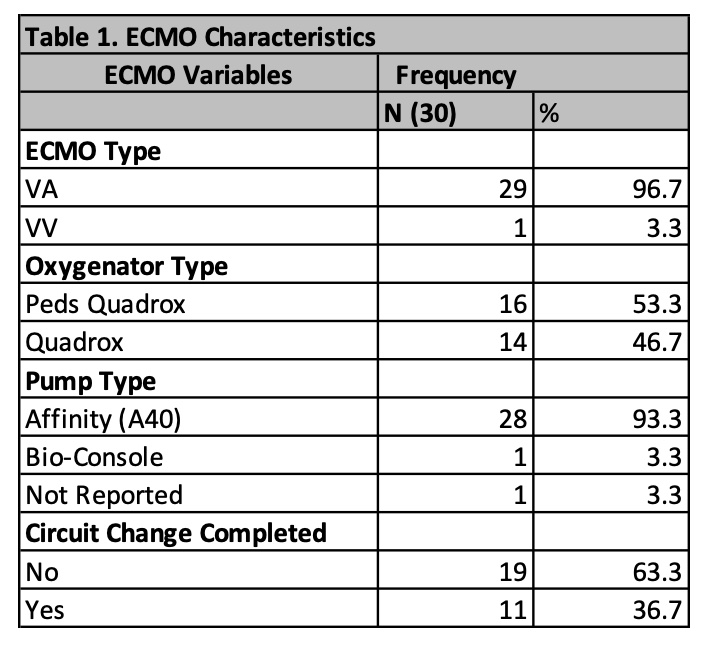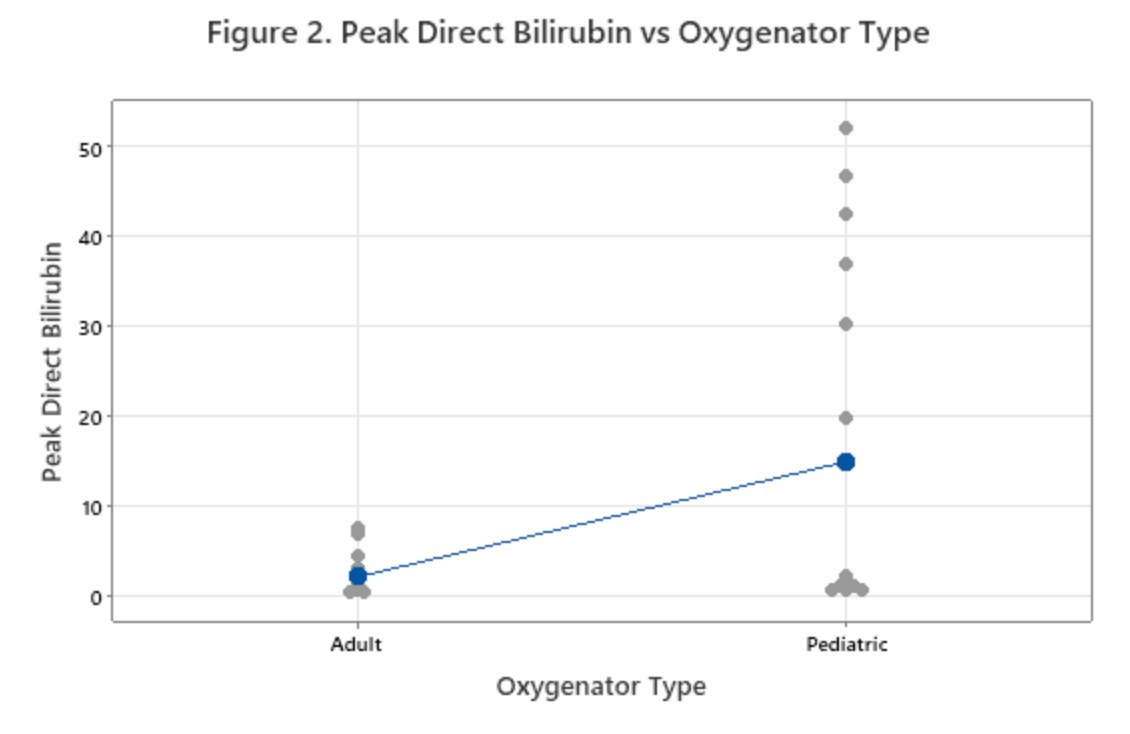Neonatal General
Neonatal General 1: Basic Science and Cardiovascular
263 - Pediatric Oxygenators are Associated with Increased Risk for Direct Hyperbilirubinemia in Neonatal ECMO – Retrospective Study at a Single Institution
Publication Number: 263.13

Michelle M. Jancaric, MD (she/her/hers)
Pediatric Resident
University of Minnesota Masonic Children's Hospital
University of Minnesota Medical School Twin Cities
Minneapolis, Minnesota, United States
Presenting Author(s)
Background: Direct hyperbilirubinemia (DHB) is a common complication of ECMO, occurring in 14-39% of ECMO cases. The etiology of DHB is multifactorial, due to both patient physiology and circuit-induced factors. Previous studies have shown that smaller cannula size and centrifugal pumps are associated with increased hemolysis. While an ex-vivo study demonstrated that pediatric oxygenators were associated with increased hemolysis, there have been limited clinical studies exploring this relationship. At our institution, where both pediatric and adult oxygenators are used, we identified multiple neonates on ECMO with significant DHB.
Objective: The objective of our study was to identify whether oxygenator type impacts circuit-induced hemolysis, subsequently resulting in DHB.
Design/Methods:
Using our institutional ECMO database, all individuals who received ECMO at the University of Minnesota Children’s Hospital NICU between January 2015 and June 2022 were identified. After IRB approval, a retrospective chart review was completed, and the group was divided based on oxygenator model (pediatric Quadraox vs. adult Quadraox). Statistical significance was assessed using t-tests.
Results: A total of 30 neonates were identified. The mean peak direct bilirubin for all patients was 8.9 mg/dL ± 15.7 (Figure 1). The type of oxygenator used was relatively split with 14 infants placed on adult oxygenators and 16 on pediatric oxygenators (Table 1). Mean +/- standard deviation peak direct bilirubin levels were significantly different between pediatric and adult oxygenators (14.9 +/-19.7 vs. 2.10 +/- 2.49; t(15)= -2.59, p=0.021 (Figure 2)). We did not find a statistically significant association between DHB and markers of hemolysis including D-dimer and plasma free hemoglobin (PFH). No other etiologies of DHB were identified in our analysis.
Conclusion(s):
Our results demonstrate that neonates placed on ECMO with pediatric oxygenators were significantly more likely to develop DHB. We hypothesize that this relationship is secondary to increased hemolysis in the smaller circuitry of the pediatric oxygenator. Although, markers of hemolysis were not associated with DHB, this analysis was limited by missing data due to DHB interference with colorimetric assays in the measurement of PFH and inability to measure D-dimers >20. These findings raise concerns about the safety of pediatric oxygenators given their strong association with DHB, a complication of ECMO associated with increased morbidity and mortality. 


